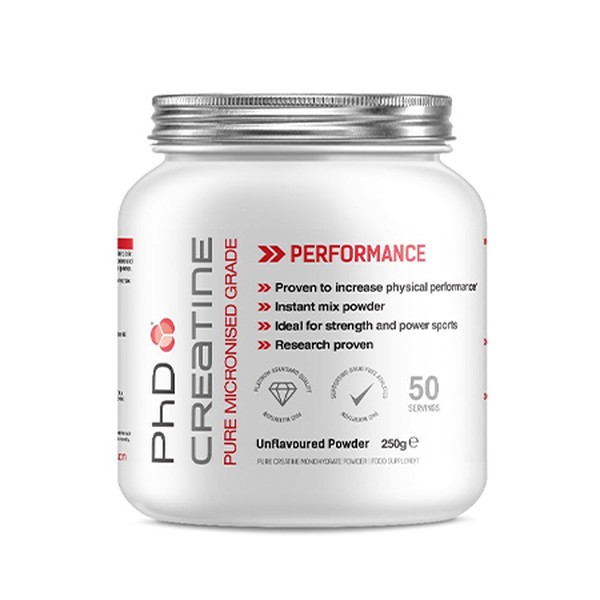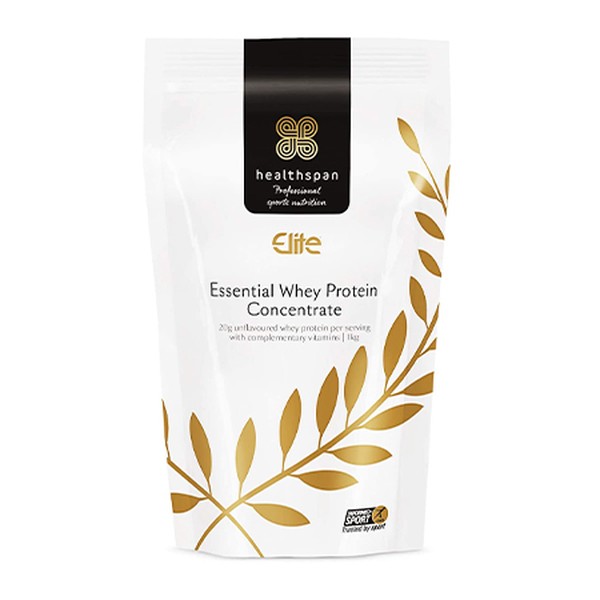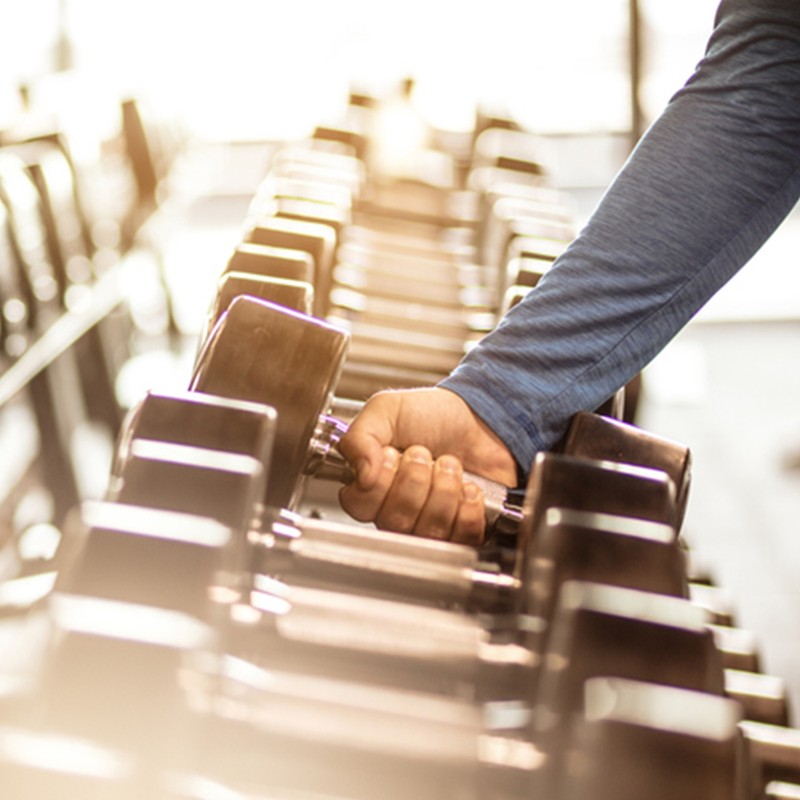An Expert Guide To Building & Maintaining Muscle Mass
First up, why do you need to think about muscle mass?
Muscle plays a vital role in many areas of your health. In fact, studies show maintaining muscle is one of the most important aspects of long-term health and longevity. As Rob explains, “We need muscle to help with physical strength, skin integrity, wound healing and immunity. Muscles also assist with mobility and balance, which is especially important in later life.” Rob also explains muscles are the largest component of your total lean body mass (LBM), which is everything that makes up your body except for fat. Your muscles account for around 50% of your total body weight.
When do we start to lose muscle mass?
It’s probably sooner than you think. As Rob tells SLMan, “From the age of 30, muscle mass starts to decline at a rate of about 5-10% per decade. In men this loss is steeper as they generally have more muscle to begin with. After the age of 40, muscle starts to decrease at a greater rate; by the time you reach 80 the loss is around 30-40% compared to when you were in your prime.” Rob also explains that, when we lose muscle, the accompanying loss of strength can have a series of knock-on effects, especially if you’re not taking active steps to preserve muscle. “During lockdown many people may have experienced a loss in muscle mass simply as a result of moving much less. Research shows housebound people can lose around 4% of their muscle mass in just a few weeks.”
How can hormones affect muscle mass?
It’s all to do with testosterone, says Rob. In a nutshell, testosterone stimulates muscle synthesis and growth, but testosterone levels plummet as we age, taking a toll on body composition. “The effects of ageing can reduce the amount of testosterone the body produces, making staying trim more of a challenge,” Rob says. “Testosterone is thought to decline by about 1% each year in men after the age of 30. This decline can lead to physical changes including decreased muscle mass and strength with increased body fat, lower bone density and slower metabolism. Sticking to a higher protein diet and ditching sugar, alcohol and foods rich in bad fats can help to lessen the natural drop in testosterone levels.”
Is it more difficult to maintain and build muscle beyond the age of 40?
It’s difficult, but not impossible, says David Wiener, training specialist at Freeletics. “Strength training is the best thing you can do to build and maintain lean muscle,” David says. “Strength training has the power to boost bone density, burn calories, enhance memory and even prevent conditions like osteoporosis. Muscle growth occurs when you continually use your muscles. However, the growth process involves tiny stresses in your individual muscle fibres, which means it’s important to perform these exercises safely to prevent the risk of injury. Your body will then use protein from your diet to repair these small tears, which will trigger muscle growth over time.” David also stresses that post-workout recovery time increases as we age, as does the potential for injury, so make sure you are properly warming up, cooling down and maintaining optimal technique and form throughout your session. Rob recommends strength training two or three times each week, incorporating compound exercises such as dead lifts and squats, which target the larger muscle groups to stimulate testosterone production.
What can you eat to improve muscle mass?
“One of the factors that contributes to a lower muscle mass as you age is that your body becomes less efficient in turning protein into fuel,” says David, stressing the importance of a protein-rich diet. “If your goal is to build muscle, aim to eat more protein than other food groups. The easiest and best way to do this is to reduce simple carbs to the lowest level you can, and increase protein and complex carbs while staying within a healthy calorie allowance. High protein foods include almonds and pistachios, chicken, oats, Greek yoghurt, broccoli, lean beef, soybeans and lentils.” Rob advises including protein with every meal: aim to eat 1-1.3g of protein per kg of body weight depending on the intensity of your training. “You may find it easier to pace your protein throughout the day. Depending on your level of training, this may involve six doses throughout the day, each containing 25-35g of protein. Remember the body can only take on so much protein, so anything more than 35g is likely to be converted into glucose and stored as fat.” While the likes of eggs, chicken and fish are good protein sources, Rob also recommends protein shakes (his top pick is Healthspan Elite Essential Whey Protein Concentrate) and hummus.
Do any other nutrients weigh into the muscle equation?
It’s not all about protein – carbs play into it too. “Carbs increase the rate at which amino acids are taken up by muscle tissue by way of the hormone insulin. This same hormone also initiates the suppression of muscle protein breakdown,” Rob explains. “Carbs are also essential for energy and will guarantee you’ll have adequate fuel to get you through a tough session. Ensuring you have adequate energy in the form of calories will also prevent the body pulling on protein from muscle to support its energy needs.” Healthy fats are also important – they prevent the breakdown of muscle tissue and keep testosterone levels topped up. “If you like counting macros, then aim for 30-35% protein, 45-60% carbs and 15-30% fat – protein must remain constant at this percentage to ensure muscle growth,” Rob stresses.
Does stress affect muscle mass?
It may seem an unlikely connection, but stress can raise levels of the hormone cortisol, which can wreak havoc with muscle mass. “Too much cortisol can encourage tissue breakdown and reduced protein synthesis, while the conversion of protein to glucose can decrease muscle mass and increase fat around your middle. Cortisol can also suppress growth hormone and impair testosterone production,” explains Rob. If you’re burning the candle at both ends, Rob recommends getting your sleep back on track, as it’s during sleep that muscle repair and recovery happens. When it comes to managing stress levels, Rob recommends strategies such as breathing, meditation and other mindfulness techniques.
What about putting on muscle without putting on fat – is this possible?
The experts recommend a slow and steady approach. “The growth in muscle happens when protein synthesis outweighs its breakdown. In order to increase muscle mass, you need to eat more calories than you need, and a higher percentage should come from protein. On training days try to eat more than usual, then on rest days eat enough to allow you to break even. This will help to avoid excessive fat storage,” advises Rob.
If you’re struggling to maintain muscle mass, why else might this be?
As Rob explains, “In some cases, the effort you put into your training and diet could be hampering your ability to maintain muscle mass, especially if you are overdoing it.” Here’s what could be taking its toll on your body composition…
Too much cardio
“Cardio is essential for cardiovascular health and also helps burn fat. However, if you’re trying to increase your muscle mass, endurance cardio is not going to help. Keep long cardio sessions to just twice a week to prevent muscle breakdown. On other training days focus on shorter, high-intensity sessions.”
Overtraining with weights
“You have to give your body enough time to recover after training or your muscles will never fully repair, rebuild and grow. Always include one or two days of complete rest.”
Not eating enough
“Not eating enough of the right type of calories and protein can lead to muscle loss, tiredness and fatigue. There are apps you can use to work out your daily calorie and protein requirements, which may give you a useful idea of what and when to eat.”
For more information, visit RobHobson.co.uk and Freeletics.com.



*Features published by SLMan are not intended to treat, diagnose, cure or prevent any disease. Always seek the advice of your GP or another qualified healthcare provider for any questions you have regarding a medical condition, and before undertaking any diet, exercise or other health-related programmes.
DISCLAIMER: We endeavour to always credit the correct original source of every image we use. If you think a credit may be incorrect, please contact us at [email protected].


